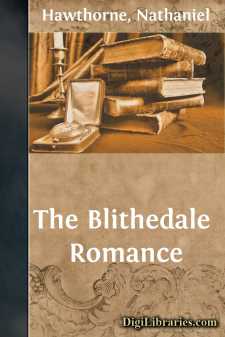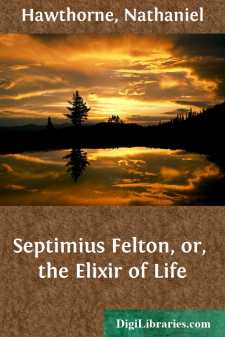Categories
- Antiques & Collectibles 13
- Architecture 36
- Art 48
- Bibles 22
- Biography & Autobiography 813
- Body, Mind & Spirit 142
- Business & Economics 28
- Children's Books 17
- Children's Fiction 14
- Computers 4
- Cooking 94
- Crafts & Hobbies 4
- Drama 346
- Education 46
- Family & Relationships 57
- Fiction 11829
- Games 19
- Gardening 17
- Health & Fitness 34
- History 1377
- House & Home 1
- Humor 147
- Juvenile Fiction 1873
- Juvenile Nonfiction 202
- Language Arts & Disciplines 88
- Law 16
- Literary Collections 686
- Literary Criticism 179
- Mathematics 13
- Medical 41
- Music 40
- Nature 179
- Non-Classifiable 1768
- Performing Arts 7
- Periodicals 1453
- Philosophy 64
- Photography 2
- Poetry 896
- Political Science 203
- Psychology 42
- Reference 154
- Religion 513
- Science 126
- Self-Help 84
- Social Science 81
- Sports & Recreation 34
- Study Aids 3
- Technology & Engineering 59
- Transportation 23
- Travel 463
- True Crime 29
Nathaniel Hawthorne
Nathaniel Hawthorne was a prominent American novelist and short story writer of the 19th century, known for his exploration of themes such as sin, guilt, and moral complexity. His most famous works include "The Scarlet Letter" and "The House of the Seven Gables," which are quintessential examples of dark romanticism. Hawthorne's writing often delves into the Puritanical history of New England, reflecting on the human condition and societal norms.
Author's Books:
Sort by:
Once upon a timeâbut whether in the time past or time to come is a matter of little or no momentâthis wide world had become so overburdened with an accumulation of worn-out trumpery, that the inhabitants determined to rid themselves of it by a general bonfire. The site fixed upon at the representation of the insurance companies, and as being as central a spot as any other on the globe, was...
more...
I. OLD MOODIE The evening before my departure for Blithedale, I was returning to my bachelor apartments, after attending the wonderful exhibition of the Veiled Lady, when an elderly man of rather shabby appearance met me in an obscure part of the street. "Mr. Coverdale," said he softly, "can I speak with you a moment?" As I have casually alluded to the Veiled Lady, it may not be amiss...
more...
FRANCE. Hotel de Louvre, January 6th, 1858.—On Tuesday morning, our dozen trunks and half-dozen carpet-bags being already packed and labelled, we began to prepare for our journey two or three hours before light. Two cabs were at the door by half past six, and at seven we set out for the London Bridge station, while it was still dark and bitterly cold. There were already many people in the streets,...
more...
INTRODUCTORY TOTHE GORGON’S HEAD ENEATH the porch of the country-seat called Tanglewood, one fine autumnal morning, was assembled a merry party of little folks, with a tall youth in the midst of them. They had planned a nutting expedition, and were impatiently waiting for the mists to roll up the hill-slopes, and for the sun to pour the warmth of the Indian summer over the fields and pastures, and...
more...
CHAPTER I. When Edward Temple was about eight or nine years old he was afflicted with a disorder of the eyes. It was so severe, and his sight was naturally so delicate, that the surgeon felt some apprehensions lest the boy should become totally blind. He therefore gave strict directions to keep him in a darkened chamber, with a bandage over his eyes. Not a ray of the blessed light of heaven could be...
more...
There is snow in yonder cold gray sky of the morning!-and, through the partially frosted window-panes, I love to watch the gradual beginning of the storm. A few feathery flakes are scattered widely through the air, and hover downward with uncertain flight, now almost alighting on the earth, now whirled again aloft into remote regions of the atmosphere. These are not the big flakes, heavy with moisture,...
more...
Septimius Felton. The existence of this story, posthumously published, was not known to any one but Hawthorne himself, until some time after his death, when the manuscript was found among his papers. The preparation and copying of his Note-Books for the press occupied the most of Mrs. Hawthorne's available time during the interval from 1864 to 1870; but in the latter year, having decided to...
more...
Hearken to our neighbor with the iron tongue. While I sit musing over my sheet of foolscap, he emphatically tells the hour, in tones loud enough for all the town to hear, though doubtless intended only as a gentle hint to myself, that I may begin his biography before the evening shall be further wasted. Unquestionably, a personage in such an elevated position, and making so great a noise in the world,...
more...
Respectable-looking individual makes his bow and addresses the public. In my daily walks along the principal street of my native town, it has often occurred to me, that, if its growth from infancy upward, and the vicissitude of characteristic scenes that have passed along this thoroughfare during the more than two centuries of its existence, could be presented to the eye in a shifting panorama, it...
more...
We have before us a volume of autograph letters, chiefly of soldiers and statesmen of the Revolution, and addressed to a good and brave man, General Palmer, who himself drew his sword in the cause. They are profitable reading in a quiet afternoon, and in a mood withdrawn from too intimate relation with the present time; so that we can glide backward some three quarters of a century, and surround...
more...











